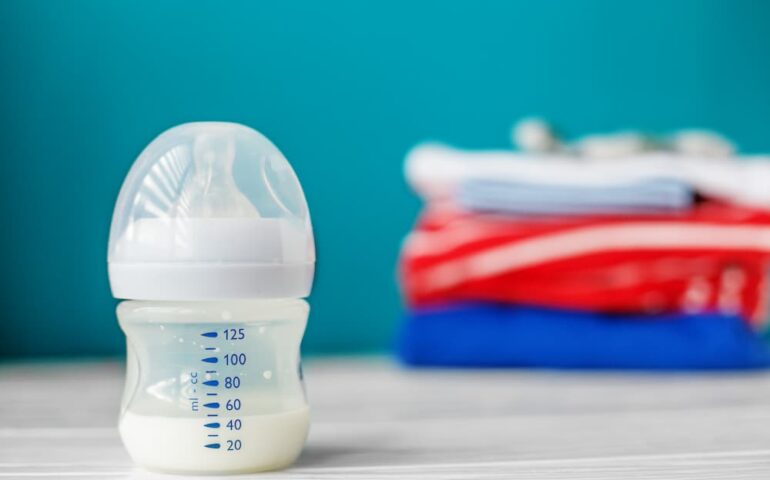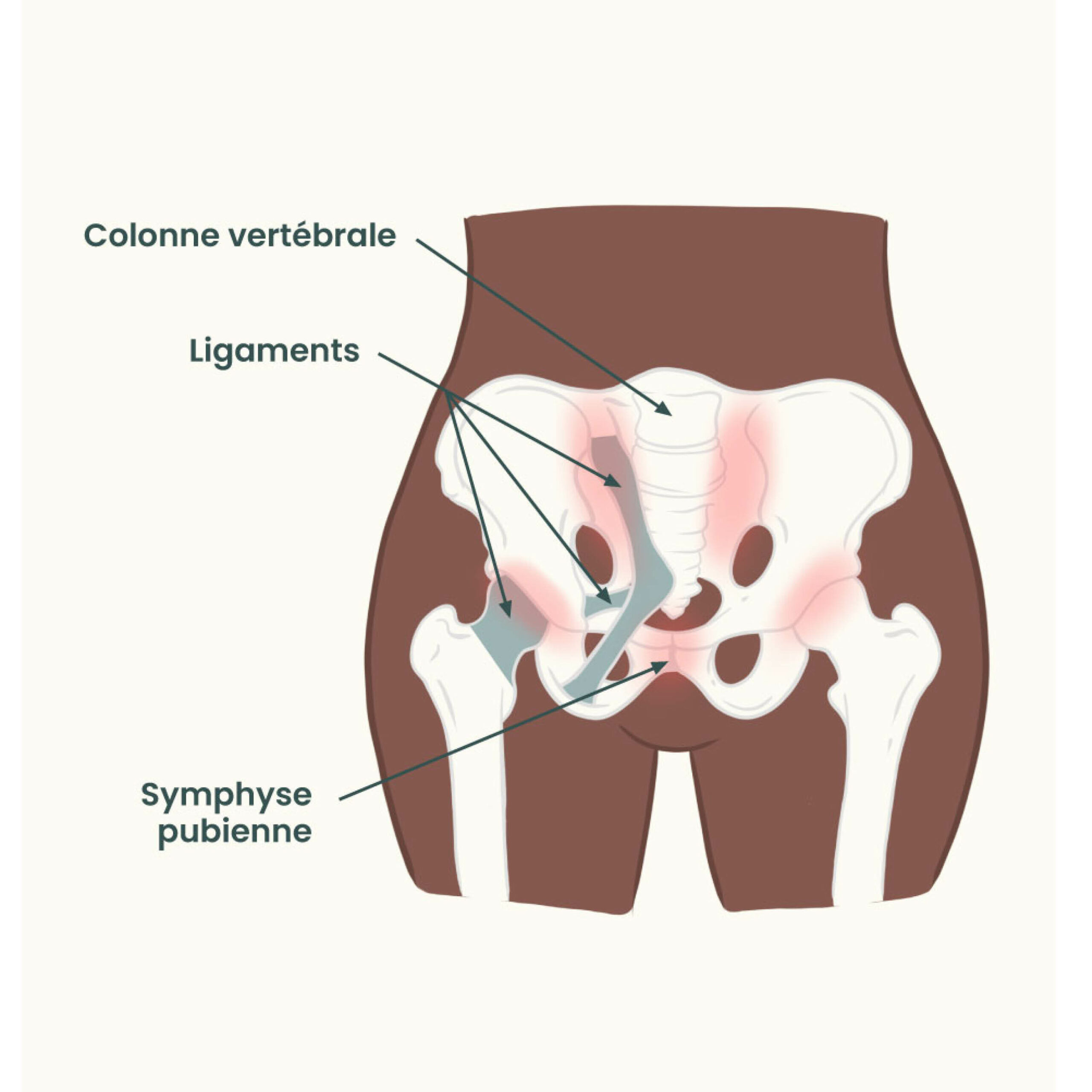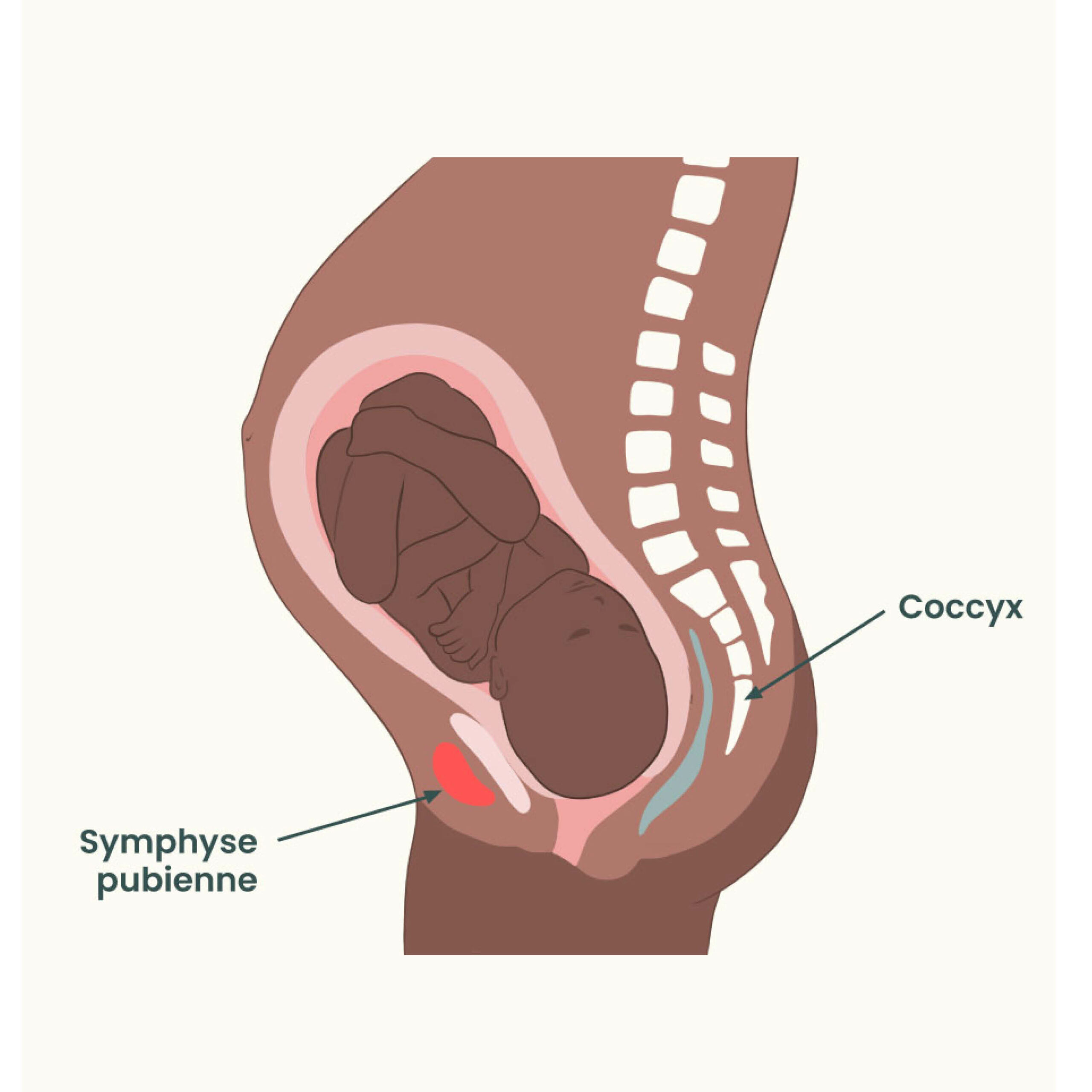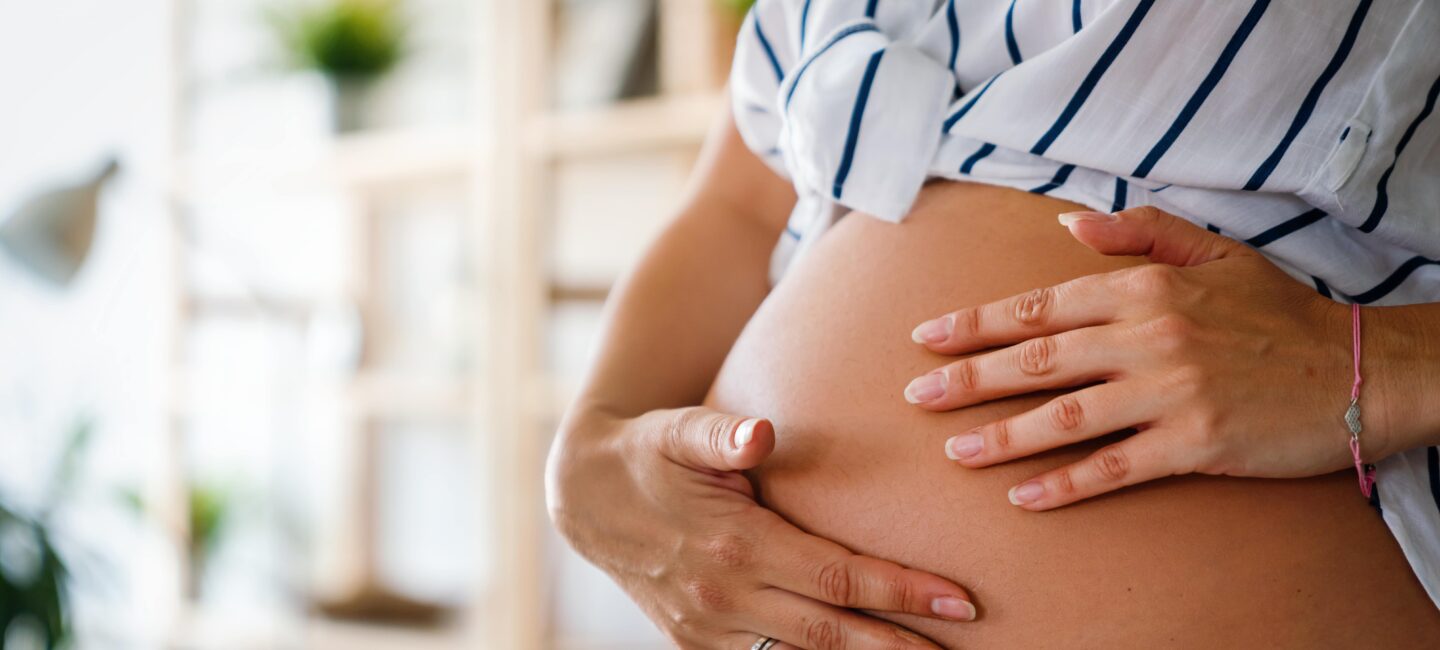
We can no longer count the number of bodily changes that pregnancy brings. After all, creating and sheltering a little human for 9 months requires quite a few adaptations from our body!
However, sometimes, some of these changes can be painful. Today we’re talking about the pubic symphysis: what it is, how to relieve the pain, and most importantly, how to prevent it!
What is the pubic symphysis?
The pubic symphysis is a fibrous cartilage tissue located in front of the bladder and above the genitals. It connects the two sides of the pelvis, forming the junction between the two pubic bones (left and right). Normally, it has very little mobility.
During pregnancy, hormonal changes cause the pelvic ligaments to loosen. This loosening makes the joints (including the pubic symphysis) more mobile, allowing the bones to move and create space for the baby.
Unfortunately, this loosening can also cause discomfort or even very intense pain.


What causes pubic symphysis pain during pregnancy?
There are several reasons that can explain pain in the pubic symphysis area during pregnancy.
- Your pelvis structure loosens: as we just saw, during pregnancy, your pelvic joints loosen to create space for your baby to develop.
In case you were wondering: yes, it’s hormones again! Relaxin is a hormone secreted a few weeks before childbirth. It relaxes the pelvic ligaments and the pubic symphysis.
- Your balance changes: or rather, your imbalance grows. As your uterus expands, your center of gravity shifts. Your breasts get heavier, as does your belly, pulling you forward. To try to compensate, your muscles and ligaments work harder to stabilize you, which can cause some tension.
- More weight, less movement: many women gain weight during pregnancy and tend to move less. That’s normal — pregnancy is tiring! This extra weight puts more pressure on the joints, which also don’t like immobility.
What are the symptoms of pubic symphysis diastasis?
A diastasis (or separation) is a widening at the level of the pubic symphysis, which is often painful. These pains usually occur in the third trimester, when childbirth is near.
The pain can range from mild discomfort to intense pain felt during physical effort or even just walking a few steps.
Sometimes, the pain is so sharp that it requires walking with crutches. This is called Lacomme’s syndrome. It tends to affect women who have already experienced multiple pregnancies.
The pain can also worsen depending on your fatigue, your posture (especially at night), or appear only during specific movements.
Want to learn more? Feel free to download the May app, where you’ll find plenty of resources to support and guide you throughout your pregnancy.
How are pubic symphysis problems diagnosed?
In general, these types of musculoskeletal problems are not serious or dangerous for your health or your baby’s. Uncomfortable, yes. Painful, often. But not serious — that’s at least the positive side.
That said, the pain can be hard to bear: don’t hesitate to consult the healthcare professional following your pregnancy. They can determine whether it really is a pubic symphysis problem and recommend exercises, postures, treatment, and/or sick leave depending on your situation.
It is also possible that you may be referred to a rheumatologist: a specialist in musculoskeletal pain (not just rheumatism).
❗And of course, in case of sudden, severe, and/or unusual pain, listen to your body and go to the emergency room quickly!
How to relieve pubic symphysis pain during pregnancy?
Unfortunately, there’s no miracle cure that works for all women without exception, but you can still try one of these solutions:
- Use a thin support belt: to help your muscles and ligaments support the weight of your belly.
- Avoid carrying heavy loads: it will only increase the tension on your muscles.
- Consult your doctor and/or pregnancy care provider: so they can prescribe treatment to reduce the pain if necessary.
- Consult other health professionals: osteopath, physiotherapist, acupuncturist, rheumatologist… Some specialist consultations may even be covered by health insurance if prescribed by a healthcare professional.
Can pubic symphysis pain be prevented before it appears?
Good news: you can take action to prevent and/or reduce pubic symphysis pain by adopting a few habits.
Do gentle physical activities
Your joints and muscles dislike immobility! Unless contraindicated, you can try (re)taking up gentle physical activity such as walking, swimming, water aerobics, stationary biking, yoga, Pilates, stretching…
Be careful, though: in case of significant pelvic pain, long walks are discouraged, as they can cause considerable discomfort.
Always adapt your program to your pregnancy. In any case, remember to listen to yourself. You can ask your doctor’s advice and practice reasonably (for example, avoid sports with risks of blows or falls).
Adopt good posture habits
This applies to life in general, but it’s especially important during pregnancy. If you suffer from pubic symphysis pain, some positions can be particularly uncomfortable. It’s important to learn to recognize and avoid them.
In general, try to keep your back straight, avoid crossing your legs, push off with your arm to roll onto your side when getting up in the morning, bend your knees and keep your back straight when bending down.
Try the pregnancy belt and ball
The pregnancy belt is specially designed to help you maintain your pelvis in the right position and support the weight of your belly. Ideally, choose a thin model without stays so as not to restrict your movements.
The pregnancy ball is very useful for relieving pain and forces you to sit upright. As a bonus, the ball allows you to move during otherwise static moments (watching a movie or series, for example). Ask for advice to choose one suited to your size.
Limit weight gain
Indeed, weight gain is an aggravating factor for musculoskeletal pain. Limiting weight gain helps prevent ligament pain. This doesn’t mean depriving yourself, but rather trying to adopt a healthy diet. And if you need help, don’t hesitate to consult healthcare professionals — that’s what they’re there for!
Get enough magnesium
Magnesium helps relieve ligament pain. You can find it in certain foods, such as bananas, but also in some dietary supplements. For supplements: ask a healthcare professional for advice.
Last but not least: childbirth. As mentioned earlier, pubic symphysis pain usually fades after delivery. Your hormones will gradually return to “normal” levels and your pubic symphysis will become fixed again (since it’s the mobility caused by relaxin that creates the pain).
Rest assured: pubic symphysis pain is not dangerous for you or your baby. We know, however, that it’s uncomfortable and even very painful, so we hope you’ll soon find what works best to relieve it!
Photo: nd3000, Envato
This text was translated from French by an artificial intelligence. The information, advice, and sources it contains comply with French standards and may therefore not apply to your situation. Make sure to complement this reading by visiting the May US/UK app and consulting the healthcare professionals who are supporting you.



